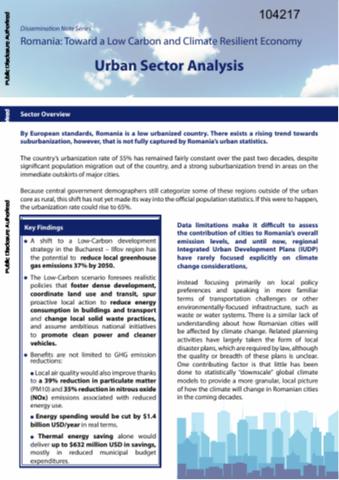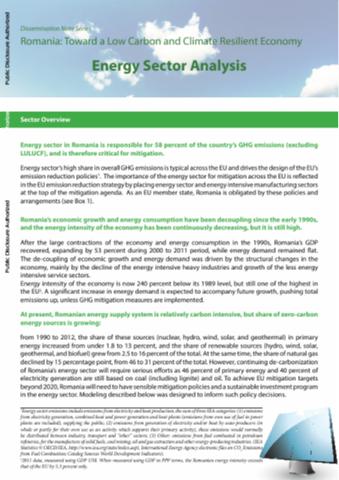Romania Toward a Low Carbon and Climate Resilient Economy
By European standards, Romania is a low urbanized country. There exists a rising trend towards suburbanization, however, that is not fully captured by Romania’s urban statistics. The country’s urbanization rate of 55 percent has remained fairly constant over the past two decades, despite significant population migration out of the country, and a strong suburbanization trend in areas on the immediate outskirts of major cities.




